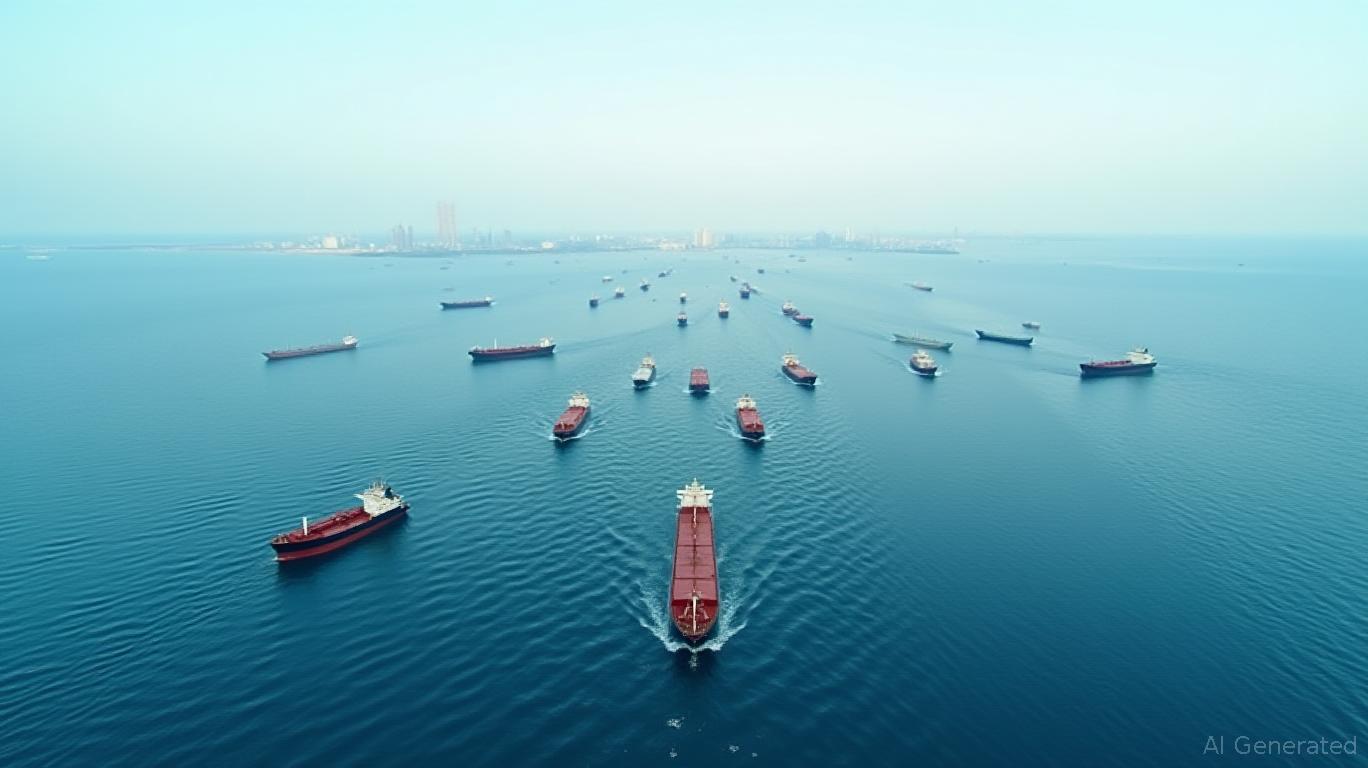Navigating Geopolitical Storms: How Electronic Interference and Shadow Fleets Shape Energy Trading Risks and Opportunities
The Strait of Hormuz, a 34-mile-wide chokepoint through which nearly 20% of the world's oil flows, has become a geopolitical battleground. Recent incidents, including the collision of two oil tankers amid surging electronic interference, underscore the fragility of global energy supply chains. For investors, these risks present both challenges and opportunities in energy trading and insurance markets. Here's how to parse the risks—and where to bet.
The Strait of Hormuz: A Maritime Crossroads Under Siege

The Strait's strategic importance cannot be overstated. Approximately 15 million barrels of oil and 20% of global liquefied natural gas (LNG) transit its narrow
daily. Yet, its geographic centrality to Middle Eastern energy exports has turned it into a flashpoint. Rising tensions between Iran and Israel, compounded by electronic interference disrupting navigational systems, have created a volatile environment for maritime traffic. The June 2025 collision of the Front Eagle and the Adalynn—a “dark fleet” tanker—highlighted the cascading risks. While the incident was initially dismissed as a navigational error, analysts suspect electronic disruptions, such as spoofed AIS signals, may have played a role.Electronic Warfare at Sea: A New Layer of Risk
The surge in electronic interference—reportedly originating near Iranian territorial waters—has raised alarms. The UK Maritime Trade Operations (UKMTO) has documented multiple instances of AIS spoofing and GPS jamming, which impair ships' ability to track their location or avoid collisions. Such disruptions not only increase accident risks but also create opportunities for adversaries to misdirect vessels or exploit supply chain vulnerabilities.
The Shadow Fleet: Smuggling's Double-Edged Sword
The Adalynn, part of a fleet operating outside regulatory scrutiny, epitomizes the shadowy world of oil smuggling. These “dark fleets”—often flagged to states with lax oversight—bypass sanctions, evade taxes, and obscure supply chain provenance. While they offer energy traders access to discounted crude, they also introduce legal and reputational risks. For instance, vessels like the Adalynn may be linked to sanctioned entities, exposing buyers to penalties or asset freezes.
Yet, the shadow fleet's existence also reflects a broader market reality: legitimate traders may face shortages if sanctioned crude (e.g., from Iran or Venezuela) is funneled through illicit channels. This creates arbitrage opportunities for agile traders willing to navigate the gray zone—but only for those with robust compliance frameworks.
Implications for Energy Traders: Hedging, Diversification, and Vigilance
Energy traders must balance risk and reward. Here's how to position:
- Hedge Against Supply Volatility:
- Use futures contracts to lock in prices if Strait disruptions spike Brent crude prices.
Monitor to time trades.
Diversify Shipping Routes:
Invest in companies with access to alternate routes, such as the Suez Canal or East African terminals. Firms like Trafigura or Vitol, with diversified supply networks, may outperform peers reliant on Hormuz.
Scrutinize Counterparty Risks:
- Avoid deals with entities linked to shadow fleets. Due diligence tools, such as ship tracking databases (e.g., MarineTraffic), can help identify sanctioned vessels.
Opportunities in the Insurance Sector: Pricing Risk in a Chaotic Market
Marine insurers face rising underwriting costs but also a chance to capitalize on new demand:
- Higher Premiums for Strait Transit:
Insurers like Lloyd's of London are likely to charge premiums 30–50% higher for Hormuz routes, boosting margins for firms with strong risk-assessment capabilities.
Niche Products for Cyber Risks:
Insurers could develop policies covering cyberattacks on navigational systems—a first in the maritime sector. Companies like XL Catlin, already expanding into cyber coverage, may lead this shift.Short-Term Gains in Reinsurance:
Reinsurers could profit from ceding risks to capital markets via insurance-linked securities (ILS).
Conclusion: Position for Volatility, but Avoid the Shadows
The Strait of Hormuz's risks are unlikely to abate soon. Investors should:
- Avoid outright bets on Hormuz-dependent assets: Refineries or terminals heavily reliant on the strait face existential risks if shipping is disrupted.
- Favor energy traders with diversified supply chains: Firms like Gunvor or Mercuria, which source from multiple regions, offer resilience.
- Consider insurers with cyber risk expertise: Insurers like Chubb or Allianz, expanding into tech-driven underwriting, may see premium growth.
The takeaway? Geopolitical storms in the Strait of Hormuz will keep markets on edge—but for investors willing to navigate carefully, the turbulence can yield profit.
Final caveat: Monitor geopolitical headlines closely. A full Iranian blockade of the Strait, while unlikely, would send oil prices soaring and trigger systemic market chaos.

Comments
No comments yet